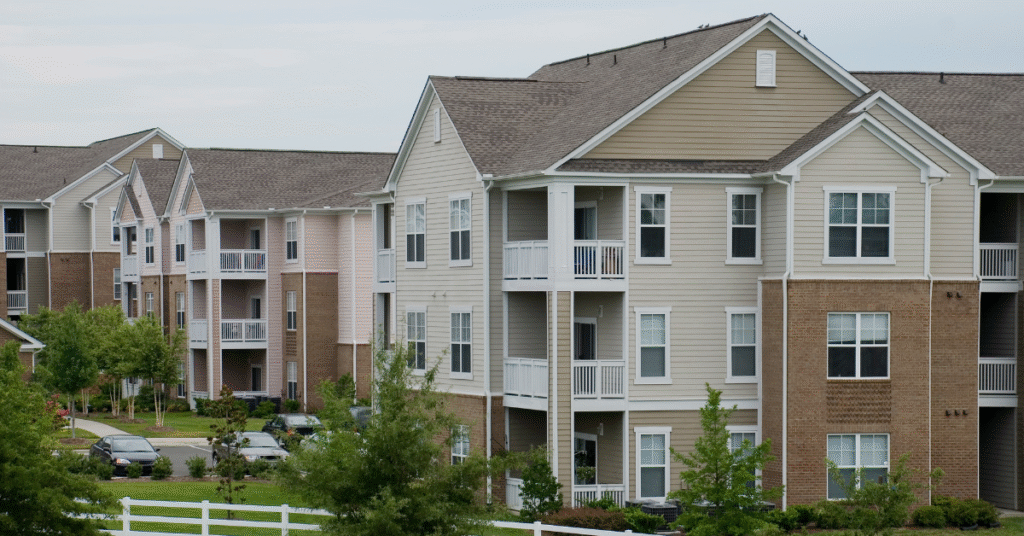As multifamily investors, we’re constantly navigating cycles of supply, demand, regulation, and financing. Last week, a meaningful policy development emerged that deserves attention, and perhaps, a strategic response.
On October 9, the U.S. Senate passed the ROAD to Housing Act, a bipartisan bill aimed squarely at increasing the nation’s housing supply and tackling affordability through regulatory reform.
While the bill still needs House approval, its implications for our space are already clear: the federal government is finally prioritizing supply-side solutions, and that shift could shape multifamily investment strategies over the next several years.
A Push Toward More Build-Friendly Policy
At its core, the ROAD to Housing Act aims to remove friction from the development process. It directs HUD to work with builders and local governments to establish best practices for zoning and land use reform, rewards municipalities that adopt pro-housing policies, and encourages the streamlining of environmental review and permitting at local levels.
In practical terms, this could:
- Accelerate project timelines in growth markets where cities align with federal incentives.
- Moderate construction costs over time by reducing regulatory burdens (which currently account for roughly 25% of a new home’s cost, per NAHB).
- Unlock underutilized land through zoning reform, especially in suburban and infill areas that are ideal for workforce and attainable housing developments.
For investors, this means potential expansion of viable development pipelines in secondary and tertiary markets that were previously slowed by local resistance or zoning complexity.
Implications for Existing Owners
While more supply might sound like a headwind, it can actually create long-term stability in a market that’s been plagued by volatility in both rent growth and affordability pressure. By increasing overall housing availability, the legislation could:
By addressing affordability through increased housing construction rather than rent control, the legislation could help ease political and regulatory pressure on landlords. Over time, this approach may promote healthier rent growth patterns, smoothing out the extreme peaks and troughs experienced in recent years and creating more sustainable, predictable performance for multifamily assets. Additionally, as local markets adopt clearer, standardized policy frameworks, investor confidence and liquidity are likely to improve, supporting overall valuation stability across the sector.
In short, while the ROAD to Housing Act won’t flood the market with new units overnight, it could de-risk multifamily ownership over the long term by creating a more balanced policy environment.
Strategic Takeaways for Investors
While the bill’s passage through the Senate doesn’t immediately move markets, it does provide valuable insight into where housing policy, and therefore capital, may be heading. Here are several implications worth watching:
- Markets that embrace pro-housing reforms could see faster permitting and growth. Investors might want to monitor cities and counties that quickly align with HUD’s forthcoming best-practices framework. These jurisdictions may become development-friendly zones for new multifamily supply.
- Construction cost inflation could moderate over time, improving new-build feasibility, especially for value-add developers looking to pivot into light construction or redevelopment plays.
- Existing stabilized assets in tight supply markets may hold premium value over the next 12–24 months as the new policy framework takes time to translate into actual units.
- Policy predictability is returning, and with it, the confidence needed for institutional capital to re-enter select development markets.
Looking Ahead
The bill still faces political delays in the House, but the bipartisan momentum behind housing reform appears strong. When housing supply becomes a national priority, it tends to reshape investment risk across the board, from entitlement timelines to financing conditions.
For now, multifamily investors should view this as a signal of longer-term structural support for the industry. The ROAD to Housing Act won’t reverse today’s high construction costs or capital market challenges overnight, but it reinforces one of the most investable themes of the next cycle: policy-driven expansion of housing supply and the opportunities it creates for well-capitalized investors positioned to move early.
When You’re Ready… Here’s 3 Ways We Can Help:
- Connect With Our Team: Whether you’re exploring passive real estate for the first time or you’re a seasoned investor looking for a trusted partner, our team is available to answer your questions. Schedule a confidential strategy call to learn more about our investment philosophy, current opportunities, and how we help investors achieve income, growth, and tax efficiency.
- Join Our Private Investor Portal: Gain exclusive access to our current offerings and ongoing pipeline of multifamily investments. Inside, you’ll find detailed financials, market insights, and structured deal overviews—all designed to help you make informed, confident decisions about where to place your capital.
- Review Our Investment Strategy: Get a clear understanding of how we source, underwrite, and manage multifamily assets. Our strategy is built around long-term wealth creation, consistent passive income, and disciplined risk management. Learn what sets us apart and why sophisticated investors choose to partner with us.




